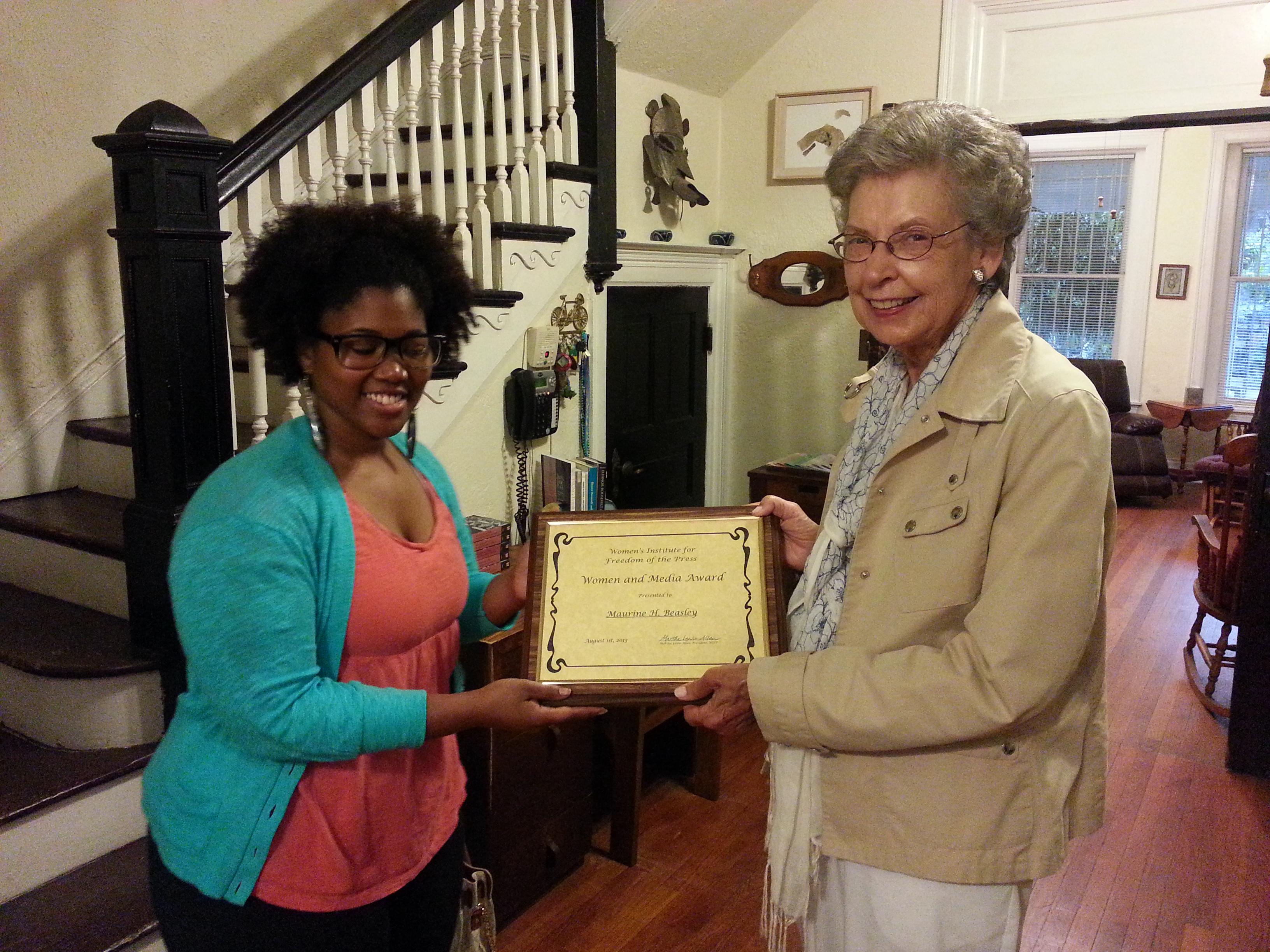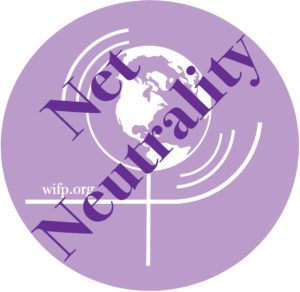She’s the First: International Day of the Girl Conference
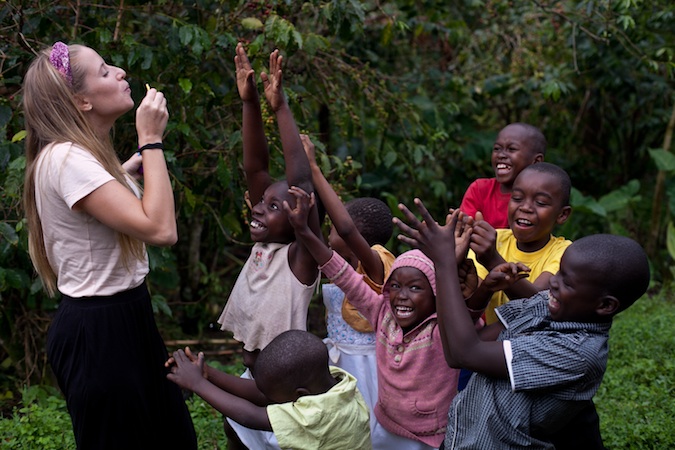
by Alexandra Hatzakis, October 2013
This year, the non-profit organization She’s the First’s chapter at American University highlighted global women’s issues by holding its first annual conference in celebration of the International Day of the Girl on October 11, 2013. The conference was coordinated by Lorraine Magee, who works with She’s the First to provide support for young women in Africa who will be the first in their families to attend university. One interesting fact that Lorraine mentioned at the start of the conference is that the total cost of sending a girl to school in Uganda for an entire year is about $360, which is a relatively small amount when compared to the $14,000 per year that Massachusetts spends on each student in public school every single year.
With this in mind, the conference opened with a panel of women from organizations that are taking steps to educate young women in developing countries, in order to provide them with resources to better their own lives as well as the lives of everyone else within their communities. The panel included spokespeople from AGE Africa, Maasai Girls Education Fund, Batonga Foundation, and She’s the First at AU. During this panel, the women discussed the issues surrounding empowering women through education, the ability of education to lift people out of poverty, and the fact that in most developing nations it is not that men do not want to educate women, but rather that they simply cannot afford it. The work that each of these organizations does not only allow girls to receive an education on par with their male counterparts, it also brings attention to the fact that educating young girls in these societies is just as worthy an investment as educating boys. One of the themes of the conference that became apparent in while I listened to these women talk about their experiences in reaching out to educate young African women is the notion that empowering girls can lead to a higher standard of living, as young women who are given the opportunity to attain a postsecondary education are able to then reach out and enrich the lives of others. The panelists stressed that listening to what the people in the community want and educating men and boys about women’s issues is a hugely important part of the process of bringing knowledge to women in these communities.
The next two panels at the Day of the Girl DC conference discussed the closely-linked issues of gender-based violence and women’s health, featuring spokespersons from organizations such as My Sister’s Place, AU Women’s Initiative, Because I am a Girl, Plan International USA, Vital Voices, Reproductive Health Technologies Project, and Advocates for Youth. An important point made during the gender-based violence panel was about how necessary it is to not only provide resources, but also to empower girls by teaching them how to talk about abuse and to educate the community so that it can become a resource to victims of gender-based violence. A statement made by the spokesperson for My Sister’s Place had particular resonance; she said part of her work is asking a person what a healthy relationship looks like for them. It is not the same for everyone, but there are particular aspects of human relationships that are unhealthy no matter what the context of the situation, such as lack of trust and hyper-dependency. It is also important to stress that the patterns of abuse may look different in every relationship and to recognize heteronormativity and sexism in the way that we talk about and perceive abuse in relationships. The spokesperson for Vital Voices said that a huge part of preventing gender-based violence is female economic empowerment. When women have the resources and know-how to grow their own business, with the support of their partners, they are less likely to devalue themselves and be exposed to situations in which violence and abuse may occur. The panelists also agreed that the most important thing people can do when trying to find ways to be proactive is to educate themselves as much as possible and then not be afraid of being a resource to those around them. We also need to begin teaching young children as well as adults to identify and think about gender norms. Along with discussing what abuse looks like and how to talk about it, it is important to talk more about positive success stories and healthy relationships.
Part of being in a healthy relationship is having the resources to take charge of one’s reproductive health, and there were a number of interesting things said about this topic during the panel on Women’s Health. Panelists pointed out that much of the legislation being enacted regarding this area works to target low-income women, not only by preventing access to birth control and abortions, which are not insured by Medicaid, but also because of the deeply ingrained socio-economic disparity which prevents women from being able to support children they might want to have. Because programs funded by the United States, both abroad and domestically, are usually not allowed to offer abortions, more and more women are seeking out unsafe abortions, pointed out Madeline Barnett, a national campus organizer from the Feminist Majority Foundation. This is an issue that can only be fixed by creating pressure for cultural competency and women’s rights. Another part of salvaging this issue is taking an intersectional approach to power structures. For instance, men can help in many areas affecting women by being educated and proactive in women’s health issues. It is important to educate men because women are part of their families, and healthy women affect the way the family functions. A woman who is healthy will have more opportunities in general; this is why we need a grassroots effort to both educate and increase the availability of resources for physical and mental health amongst the poor. Reproductive health is not only a women’s issue. Everyone should care regardless of gender because everyone is affected by a woman’s ability to receive adequate health care and education. It is also important that women, and people in general, vote for policy makers who care about issues that affect women’s health and their access to resources that enable them to make their own choices about their bodies.
The panels that tied all of the above issues together for the day were about economic empowerment and political participation. One theme the economic empowerment panel focused on is the lack of gender diversity seen in many workplaces. The key hindrances to economic empowerment for young women outlined by Dr. Ben Gunter are lower education for girls, reproductive health issues, lower social status, violence against women, and various cultural constraints. Though strides have been made to improve women’s standing in the professional sector, some policies to encourage equality in the work environment have backfired, as employers would rather not hire women for whom they will have to pay maternity leave. Dr. Caren Grown pointed out that gender inequality is something that is inevitable in the current era; therefore, we have to improve women’s vocational education, to open up opportunities in growing sectors. Sybil Edwards of DC Web Women agreed with this point, stating that women need to be encouraged to pursue degrees in STEM as well as learning more about the tech field, which is currently lacking greatly in female representation. She also said that a great area for women to get involved, especially women of color, is app development. This is because Latino and African Americans are both the largest users of mobile technology and the most underserved, and very few women are involved in creating apps that would suit their needs. Barbara Wien, of the Peace & Collaborative Development Network, pointed out that a huge barrier to economic empowerment is the social hierarchy that perpetuates the cycle of violence. There are disproportionate amounts of money going to war making while poverty is undergoing feminization. Wien said that women are fed up with being wageworkers and looking to de-link from institutions and focus on cooperative entrepreneurship, in order to encourage the collective wellbeing and security of their communities. In sum, women are growing more and more eager to work with each other, and a large part of economically empowering women can be addressed by focusing on women’s health and education while taking steps to counter domestic violence and abuse.
The way this all tied together is the need for women to engage in not only grassroots political activism, but also to create systemic change by voting into power those who will focus on gender equality issues while challenging leaders who create policies that place extra burdens on women. Education, health, and the ability to achieve success in the professional sector are areas in which women still have great strides to make, especially when viewed from a global perspective. The way that each of the panelists addressed these issues brought attention to how closely intertwined they are–there cannot be change in one area without creating change in another. The main message I received from the conference is that together, by educating ourselves, working hard to empower and encourage young girls to become strong women, and by fighting the oppressive nature of current power structures while providing better resources to women, we can begin to ensure that those changes are positive.
Re-framing the Black Woman Through the Lens and Pen of Pan-African Female Filmmakers
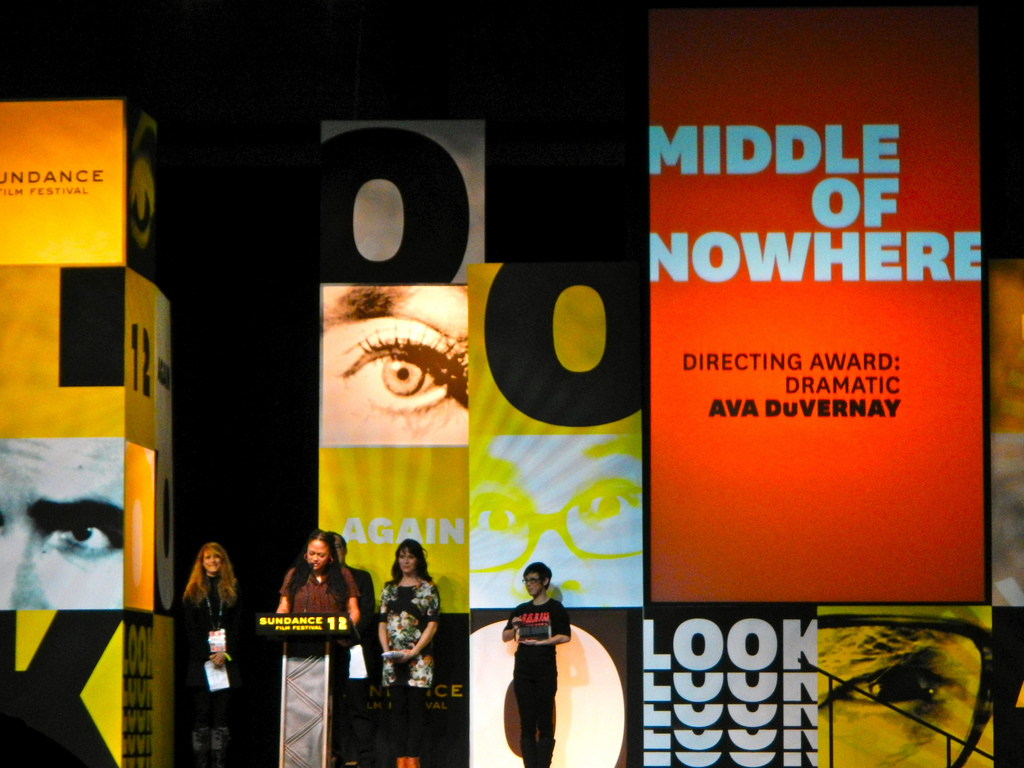
by Alethea Russell, WIFP
July, 2013
I have seen them in magazines, read about them in novels, watched them on movie and television screens but have yet to meet women like Aunt Jemima, Mammy, Jezebel or Sapphire face-to-face; that’s not to say they don’t exist in real-life embodiments. Appearing in both print and electronic forms throughout the century, these caricatures have been over-presented to audiences as representative of black women in the United States–images that suggest we are subservient, over-sexualized, angry, and malicious beings. In 2013, modern media hasn’t deviated much from early depictions of African American females. One major difference is how black people, women especially, play a role in perpetuating these non-sensical embellishments.
Art—as proposed by Aristotle in Poetics—which has since then expanded to many facets, is supposed to be true to life. The human condition so tightly folded into pieces of literature; pulsating through speakers; etched and colored on concrete and linen. But no art form is as versatile and powerful as film. It encompasses a multitude of mediums—photography, performing arts, animation, writing, and music, just to name a handful. According to a Russian filmmaker, it is distinctively the most realistic of all the arts. Though it draws influence from things like literature and theater, it’s profitability, dynamic quality, and resonance is unparalleled.
The United States movie industry alone brings in upward of $100 billion a year. Our entertainment, language, and policies dominate global industries—meaning American culture and attitudes infiltrate international consciousness. Therefore, the repetitious and shallow portrayal of certain social groups are met with acceptance by both domestic and foreign consumers as true to life. So if life imitates art and art imitates life then what does the content being produced by Hollywood and the influx of art house films created by Black African-oriented creators say about our society? Considering 90 percent of the world’s media is a product of six major corporations—from newspaper, magazine, and book publications, radio and television broadcasts, the movie and music industries, video game development, and cell phone and internet service—it’s no wonder why the mainstream sounds and images we consume daily are monotonous—boasting boasting in stereotypes, misogyny, and vanity—pursuant of the capitalistic and colonialistic ideals of its creators, covertly preying on the proletariat. A comedian once said Hollywood lets audiences know exactly how it feels about women and Black people. The way it’s done is through selective inclusion and other modes of abuse of power, whether intentional or not. What is being said, as aforementioned, is the reinforcement of ethnic and gender bias: women are merely objects subjected to voyeurism and possession; racial minorities are exotic/otherworldly or completely invisible.
No one knows the weight of both existences better than black women. “Most important is the role of the cinema in the construction of peoples’ consciousness,” Mauritanian filmmaker and actor Med Hondo declares. “Cinema is the mechanism par excellence for penetrating the minds of our peoples, influencing their everyday social behavior, directing them, diverting them from their historic national responsibilities.” These characteristics distinguish it from the members of its creative family. The words and pictures in our mind, cohesive and deliberate, form association. It is the same type of programming used on toddlers to teach them how to say their ABCs and spell. Only we’re not dealing with fruit and colors. We’re dealing with people and how we perceive each other.
Fortunately, there’s hope. Women and racial minorites are emerging in numbers to challenge the status quo and write from their point-of-view, a perspective deficient in mainstream literature, journalism, and scriptwriting and so often dictated by privileged, middle-aged, Euro-minded men. It is the stubbornness and lack of forward-thinking and not, in fact, the consensus of the public that deems black cinema unmarketable and undesirable. “Pariah,” a short-film-turned-full-length-drama about a high school aged teenager learning to love herself directed by Dee Rees was turned down by many film execs who the creator claims used coded language to dismiss the story because it was “too black” and “too gay.” Since its release it has won 25 awards, including the GLAAD Outstanding Film Award last year, and received over three dozen film festivals acceptances. This response has led Rees to believe “audiences are progressive” and “want to see different kinds of stories.” Unfortunately, Hollywood isn’t supportive of these types of projects. And with competition from television and on-demand services, the film industry is slowly losing its appeal.
For a decade Ava DuVernay worked as a movie and television publicist, representing some of Hollywood’s top directors, including Clint Eastwood and Michael Mann, before taking the leap into film-making. She even owned her own firm called DVA Media & Marketing. Her hard work behind industry greats prepared her to take more control. In 2011, she developed AFFRM, the African American Film Festival Releasing Movement which distributes Afro-centric art films and is responsible for the release of her debut narrative “I Will Follow.” Produced solely out of her own pocket, “I Will Follow,” a self reflexive story, spends twenty-four hours with a woman (played by Salli Richardson-Whitfield) who has to pack up her beloved aunt’s (played by Beverly Todd) belongings following the cancer-stricken relative’s death. Though comprised of a black cast, the story is universal.
The success of her introductory film correlates to Ree’s sentiments that there is an audience for black cinema and that, according to DuVernay, films of color don’t have to be the typical action, comedy, or historical account to get movie lovers’ attention. Less than a year later came her sophomore effort, “Middle of Nowhere,” which was distributed with the help of Participant Media and endorsed via Twitter by media mogul Oprah Winfrey. Again, boasting with a black cast and, more importantly, a black female lead (Emayatzy Corinealdi). It opened to an impressive $78,000 on only six screens. By the next week, it expanded to three times as many theaters. While she may not have made a profit from multiplex screenings, the entrepreneur and artist is well on her way to developing an imitable model for producing quality indie films. She values the work of volunteers, social media, and cultivating relationships with other like-minded creatives in addition to traditional PR tactics which have allowed her to produce, promote, and distribute her films without interference from a major studio. She has chosen this path as a way to ensure indie black films continue to be made and are given the platform to be displayed.
Just recently ESPN aired “Venus Vs,” a short documentary directed by DuVernay and highlighting Venus Williams’ dedication to continue trailblazing athlete Billie Jean King’s pay equity campaign for winning grand slam women players. This comes just months after the filmmaker won Sundance’s 2012 Best Director Award, the first for an African American female. She was actually approached by the sports network to develop a documentary on a subject of her own choosing for their Nine at IX series celebrating the 40th anniversary of Title IX, the legislation that forbids any federally funded academic program or activity from exercising gender discriminating. Having grown up in the same neighborhood as the enterprising tennis star, DuVernay felt compelled to share this much overlooked story. In the style of her previous work she revolves the narrative around the POV of a Black woman. We are given a glimpse into Williams’ character. Not as an afterthought or a victim. Non-stereotypical. Multidimensional. Heroic. Human.
Already working on another feature film, DuVernay has just been announced as Lee Daniels’ replacement as director of the biopic “Selma” about Dr. Martin Luther King, Jr.’s voting rights advocacy. As if that’s not enough for the 40-year old who changed career paths later in life, this year she became the second black woman invited to join the Academy Awards’ director branch. Kasi Lemmons preceded her in 2012. This means more people in places of influence able to act a voice for women of color.
It seems as though life these days is moving fast for the South Central L.A. native. “It’s a great time to be a black female, or female filmmaker,” she boasts. “This is the time where we can pick up our cameras and make the films we want to make.” She walks in essence of visionaries like Tressie Souders, claimed to be the first black woman to direct a film in the United States (“A Woman’s Error,” 1922); Ayoka Chenzira, the Spelman College professor noted as the first African American woman animator (“Hairpiece: A Film for Nappy Headed People,” 1985); Joy Shannon, the first African American woman filmmaker to receive a home video release (“Uptown Angel,” 1989); Julie Dash, the first African American woman to have her film distributed nationally (“Daughters of the Dust,” 1991); Leslie Harris, the first black woman to have her film distributed by a major theatrical distributor (“Just Another Girl on the I.R.T.,” 1993); Audrey Lewis, the first African American woman to write and direct a sci-fi feature (“The Gifted,” 1993); Darnell Martin, the first African American woman to direct a feature film produced by a major studio (“I Like It Like That,” 1994); Dianne Houston, first and only black woman nominated for an Academy Award for a short film (“Tuesday Morning Ride,” 1995); Cheryl Dunye, writer, director, and star of the first African American lesbian feature film (“The Watermelon Woman,” 1996); Kasi Lemmons, creator of the highest-grossing independent film of 1997 (“Eve’s Bayou”); Gina Prince-Bythewood, writer and director of the highest-grossing film by an African American woman (“Love & Basketball,” 2000); Aishah Shahidah Simmons, rape and incest survivor, activist, LGBT Studies lecturer and documentary filmmaker (No! The Rape Documentary,” 2006); Maureen Aladin, Jessica Hartley & Ella Turenne, founders of SistaPac Productions and creators of “Kindred,” a web series that follows three African American women dealing with life issues such as sexual harassment, cheating, substance abuse, fatal diseases, racism, and homosexuality; Issa Rae, a writer, director, producer, and TV show hostess whose popular web series “Misadventures of Awkward Black Girl” is one of a few monetizing through YouTube; and Mara Brock Akil, creator of the number one scripted show on cable, “The Game,” and BET’s first original drama “Being Mary Jane,” which debuted to record numbers—making it the year’s top weeknight movie premiere for the 18-49 demographic thus far.
Of course, black as a social identifier is not synonymous with African American. Women of color internationally make movies and are shaping their own images on- and off-screen, too. It is said that African cinema is genuinely feminist, affirming the woman’s value in modern African societies, but generally men have been awarded the coveted role of director. Yet pressing the image of women through the lens of the male gaze. Is it encouraging to know that diasporic women, especially black Africans like the ones I shall list, have sprouted as celebrated storytellers in Third Cinema and guerrilla filmmaking. Illustrators of black woman subjectivity include Tsitsi Dangarembga, writer of Zimbabwe’s highest-grossing film and the first black Zimbabwean woman to director a feature film (“Neria,” 1993; “Everyone’s Child,” 1996). She is also an acclaimed novelist; Euzhan Palcy, from Mozambique, is the first woman of African descent to direct a major feature film (“Dry White Season,” 1989); Dash Harris, a black Panamanian whose documentary “Negro” explores Afro-Latino identity (2012); Rahel Zegeye, responsible for “Beirut,” a documentary inspired by her frightening experience as an Ethiopian migrant and domestic worker in the Middle Eastern city (2006); Mira Nair, where the theme of Indian and multicultural identity is found throughout the Indian filmmaker’s movies (“Mississippi Masala,” 1991; “The Perez Family,” 1995; and “The Namesake,” 2006); and Pratibha Parmar, the Kenyan-born Indian who has dedicated her career to community outreach and using cinema as a tool for educating audiences about topics like lesbianism and female genital mutilation (“Warrior Marks,” 1993 and “Nina’s Heavenly Delights,” 2006).
At a glance we may look like the Aunt Jemima, Baby Mama, Hoochie Mama, Welfare Recipient, Video Vixen, Side Chick, Angry Black Female, or Token Black Bestie you saw on the screen, but our story is deeper than the surface. We come from a long line of griottes, nurturers, rulers, and keepers of culture. It’s in our nature to be seen and heard. Though there is always someone to fit the stereotype, people change. Nonetheless, black women have the right to be who they want to be and deserve to be represented properly. A major part of film or art in any form is self-expression. It’s important that media be free, diverse, and ever-evolving. Democracy gives voice to the stories, beliefs, and overall existence of its constituents. Most, if not all, of these luminous talents have criticized how disheartening it is to go to a movie or turn on the TV and not see a reflection of themselves. Why are constantly measured by the white gaze? Where are the black women authors? Who better to write about or portray a woman of color other than a woman of color? If we are shown only a fragment of our societies as told by Hollywood then they ignore the other individuals who comprise and push forward these communities. For the same reason silent film began including sound and black & whites blossomed into color, these objects–sound and color–are true to life as is the case with black women. They exist in variations of beauty and until we view them as necessary components to understanding language, culture, history and humanity then the story still goes untold. Dianne Houston states, “Black women historically have been presented as either subhuman or superhuman. Now we are starting to emerge as simply human, and that’s a wonderful thing.” As a student of film and daydreamer I say thanks to all the fearless lens holders and storytellers, unsung or otherwise. I shall make no more excuses to keep me from shaping my own world, declaring my existence, one frame at a time.
Bibliography
“Africa: Women Filmmakers Tell Their Stories.” All Africa. All Africa Global Media. 17, Feb 2012. Web. http://allafrica.com/stories/201202171378.html
“Behind the Lens: The Black Women of Film.” Separate Cinema. 2008. Web.
http://www.separatecinema.com/exhibits_behindthelens.html
Carmichael, Emma. “’I Have Stories I Want to Tell’: A Conversation with Filmmaker Ava DuVernay.” The Hairpin. 2, July 2013. Web. http://thehairpin.com/2013/07/i-have-stories-i-want-to-tell-a-conversation-with-filmmaker-ava-duvernay
Dovey, Lindiwe. “New Looks: The Rise of African Women Filmmakers.” Feminist Africa. African Gender Institute: University of Cape Town. (2002). no. 16. 16-36.
Hope, Ted. “Guest Post: Ava DuVernay ‘What Color is Indie.’ Indie Wire. 4, May 2011. Web.
http://blogs.indiewire.com/tedhope/guest_post_ava_duvernay_what_color_is_indie
Makarechi, Kia. “Dee Rees’ ‘Pariah’ and Hollywood’s Inability to Include Black Black Americans.”
HuffPost Arts & Culture. Huffington Post. 9, Jan 2012. Web. http://www.huffingtonpost.com/2012/01/06/dee-rees-pariah-hollywood-race-problem-black-
actors_n_1190478.html
McLeod, Corinne. “Teaching Aberrance: Cinema as a Site for African Feminism.” Journal of International Women’s Studies, 12 no. 4. (July 2011). 79-92.
Tarkovsky, Andrey. “The Beginning.” Sculpting in Time: Reflections of the Cinema. Eighth University of Texas Press: Austin, TX. 2003. Print.
Welton, Yvonne. “Feature Films Directed by African American Women.” Sisters in Cinema. Our Film Works. Web.http://www.sistersincinema.com/joomla/index.phpoption=com_content&task= view&id=70&Itemid=97
Women Make Movies. 2013. Web. http://www.wmm.com
Sexism Sells: The Misogynistic Depiction of Women in Advertising
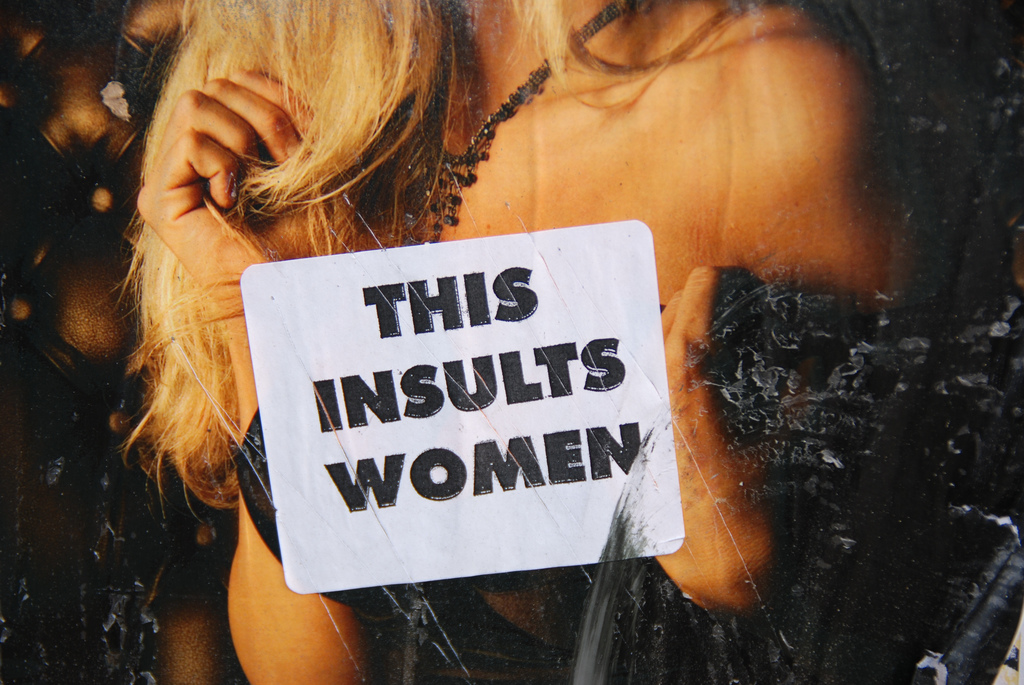
By Medha Chandorkar, WIFP
July 2013
The second-class citizenry of women is nowhere as evident in the industrialized world as it is in the fashion advertising industry. The primary consumers of fashion are females, and yet, if one were to glance through a stack of fashion magazines, the primary audience would seem to be male.
Women are invariably portrayed as sexualized objects, with bags over their heads and bruises on their bodies or in subservient, sexual positions to men, no matter what is being sold. The infamous 2007 Dolce & Gabbana ad (shown)that depicted a gang rape received great backlash, but such images have become even more popular today. To cite just a few recent examples, Johnny Farah depicted a woman being strangled by a belt, Red Tape menswear had scantily-clothed women in vending machines, and boutique store Blender hung sexualized parts of women’s bodies on hooks dangling from the ceiling. Women, the message seems to be, are literally just meat.
Objectifying women is obviously damaging to the struggle for gender equality, but what’s worse is that the pre-eminent creative minds behind these ads are not lowly designers who must follow the tide or risk losing profits. They standard of sexism is set by the elite of the fashion world: the Tom Fords and the Jimmy Choos. Their creative departments and ad designers have deep pockets and the influence to set the tone for the rest of the industry, yet they continuously revert to the same trope: women as victims, their bodies as sex.
Why? It’s simple. Only 3% of U.S. creative directors are female. When men are the only ones creating the ads, they will create it from their own viewpoint of what is attractive and desirable. Male sexual aggression and passive, objectified women become the norm, and when companies are confronted with the sexism inherent in their images, they deny it. In response to the backlash against their gang rape ad, Gabbana refused to apologize because he was just portraying “an erotic dream, a sexual game.” One might think that sometime during the lengthy creative process, someone would have mentioned that being held down by four men is much more a form of threatening, scary, and harmful sexual violence than an erotic game, but that would have required a woman’s perspective. And because women aren’t present in the boardroom or the design room or any sort of room in these companies, their voices are not heard and their perspective goes unnoticed or, worse, dismissed.
Furthermore, in the words of Jean Kilbourne, creator of the award-winning film series “Killing Us Softly,” advertising is not meant to sell us objects, but concepts. Companies want us to keep buying their products, so they portray women as inferior and flawed, while presenting their objects as the cure to become beautiful and perfect. Of course, the cure is temporary, until next season’s fashions, or impossible to achieve, with ever-skinnier models helped by PhotoShop. But when their goal is to create an endless demand, they must set an impossible standard and ensure that women forever feel “not good enough.”
These tactics, though sickening, are not just relegated to the world of fashion. They are prevalent throughout the entire advertising industry. Women’s bodies are used to sell everything from food (think beer commercials) to better mortgage rates. And because they’re so prevalent, it’s impossible to be unaffected by them.
The average American woman sees 400-600 advertisements every single day, and each one is a single subconscious reinforcement. One may think that they themselves are immune to this form of media, but the effect of quantity adds up quickly but silently. Studies have also shown that exposure to sexually explicit advertisements results in both men and women more strongly enforcing gender norms, accepting rape myths, and, specifically in the case of men, acting sexually aggressive towards women. Misogynistic advertising is yet another link in today’s rape culture.
Unfortunately, the problem is only getting worse. First, through globalization, the beauty ideals of the West are spreading around the world. A study comparing US and Indian magazines, for example, found that female models in India were beginning to copy Western poses and gendered stereotypes, with the added complication of racism through lighter skin. Second, the objectification is now also being applied to men. Kraft’s latest ads portray nearly-naked men with suggestive taglines (“The only thing better than dressing is undressing.”). This is not the gender equality in advertising media that feminists seek.
Advertising that demeans women is the norm in the industry today, and the problem is only compounded as we increase and expand our media consumption. Unfortunately, it’s also the kind of issue that seems too big to solve. How do we begin addressing a creative direction that spans almost all industries? In the past few decades, that question has been ignored for being too expansive, but the only thing that has changed is the number of misogynistic ads – and that number is only increasing.
We cannot hope to change rape culture if we do not change how we view women. We must begin with increasing the awareness that objectifying and humiliating women in the media is dangerous for everyone.
 The Women’s Institute for Freedom of the Press
The Women’s Institute for Freedom of the Press